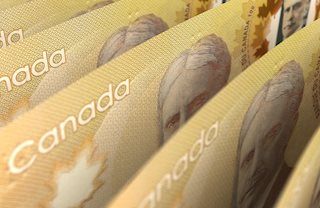USD/CAD struggles to hold 1.4400 amid muted trading activity
|
- USD/CAD edges lower to near 1.4400 as the US Dollar trades subduedly in light volume conditions.
- The Fed has guided lower number of interest rate cuts for the next year.
- Investors see the BoC reducing interest rates further to avoid inflation overshooting risks.
The USD/CAD pair faces slight pressure near the key support of 1.4400 in Monday’s North American session. The Loonie pair ticks lower as the US Dollar (USD) trades subduedly in illiquid market ahead of New Year. The US Dollar Index (DXY), which gauges the Greenback’s value against six major currencies, struggles around 108.00.
Though the Greenback edges lower on Monday but it is almost set to wrap up the calendar year with 6.7% gains, largely came in last three months as investors priced in strong growth and higher inflation in the United States (US) economy in 2025 after victory of Republican Donald Trump in Presidential elections.
Trump is expected to tight immigration controls, raise import tariffs and lower taxes under his administration. The impact is already visible as the Federal Reserve (Fed) has signaled fewer interest rate cuts for the next year. However, Fed Chairman Jerome Powell has refrained from guiding any impact of Trump’s policies on economy, inflation and interest rates.
Jerome Powell said on December 18, "It is very premature to make any kind of conclusions”. “We don’t know what will be tariffed, from what countries, for how long, in what size."
Meanwhile, the broader outlook of the Canadian Dollar (CAD) remains weak as the Bank of Canada (BoC) is expected to continue reducing interest rates further to avoid risks of inflation undershooting the central bank’s target of 2%.
The BoC reduced its key borrowing rates by 175 basis points (bps) to 3.75% this year.
US Dollar FAQs
The US Dollar (USD) is the official currency of the United States of America, and the ‘de facto’ currency of a significant number of other countries where it is found in circulation alongside local notes. It is the most heavily traded currency in the world, accounting for over 88% of all global foreign exchange turnover, or an average of $6.6 trillion in transactions per day, according to data from 2022. Following the second world war, the USD took over from the British Pound as the world’s reserve currency. For most of its history, the US Dollar was backed by Gold, until the Bretton Woods Agreement in 1971 when the Gold Standard went away.
The most important single factor impacting on the value of the US Dollar is monetary policy, which is shaped by the Federal Reserve (Fed). The Fed has two mandates: to achieve price stability (control inflation) and foster full employment. Its primary tool to achieve these two goals is by adjusting interest rates. When prices are rising too quickly and inflation is above the Fed’s 2% target, the Fed will raise rates, which helps the USD value. When inflation falls below 2% or the Unemployment Rate is too high, the Fed may lower interest rates, which weighs on the Greenback.
In extreme situations, the Federal Reserve can also print more Dollars and enact quantitative easing (QE). QE is the process by which the Fed substantially increases the flow of credit in a stuck financial system. It is a non-standard policy measure used when credit has dried up because banks will not lend to each other (out of the fear of counterparty default). It is a last resort when simply lowering interest rates is unlikely to achieve the necessary result. It was the Fed’s weapon of choice to combat the credit crunch that occurred during the Great Financial Crisis in 2008. It involves the Fed printing more Dollars and using them to buy US government bonds predominantly from financial institutions. QE usually leads to a weaker US Dollar.
Quantitative tightening (QT) is the reverse process whereby the Federal Reserve stops buying bonds from financial institutions and does not reinvest the principal from the bonds it holds maturing in new purchases. It is usually positive for the US Dollar.
Information on these pages contains forward-looking statements that involve risks and uncertainties. Markets and instruments profiled on this page are for informational purposes only and should not in any way come across as a recommendation to buy or sell in these assets. You should do your own thorough research before making any investment decisions. FXStreet does not in any way guarantee that this information is free from mistakes, errors, or material misstatements. It also does not guarantee that this information is of a timely nature. Investing in Open Markets involves a great deal of risk, including the loss of all or a portion of your investment, as well as emotional distress. All risks, losses and costs associated with investing, including total loss of principal, are your responsibility. The views and opinions expressed in this article are those of the authors and do not necessarily reflect the official policy or position of FXStreet nor its advertisers.